Dive into an exciting underwater adventure and experience the thrill of swimming with turtles at Caño Island.
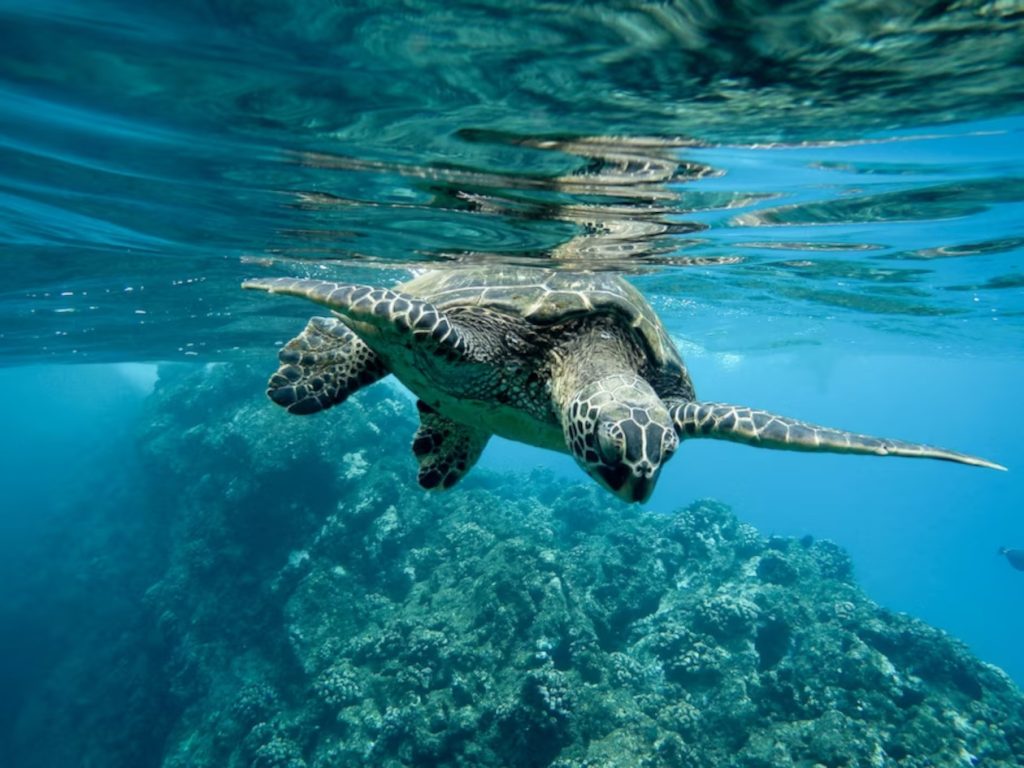
Nestled in the heart of the Pacific Ocean, this tropical haven invites adventure enthusiasts to witness the enchanting world of these ancient mariners up close.
In this article, we plunge into the crystal-clear waters surrounding Caño Island, immersing ourselves in the fascinating experience of diving alongside these majestic creatures.
Prepare to be mesmerized by the vibrant marine life and lush biodiversity of this sanctuary, as we uncover the secrets of a truly unforgettable underwater encounter.
Why Caño Island is a good place to see turtles
Here are some or the reasons of why Caño Island is a good place to see turtles:
Nesting Grounds
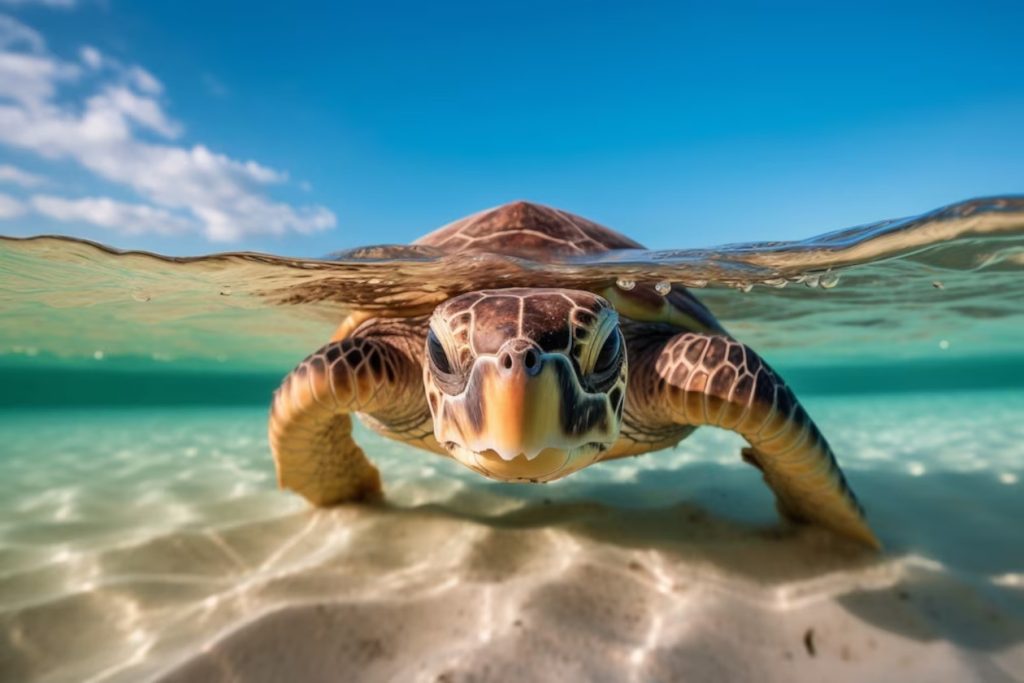
Caño Island serves as a vital nesting ground for several species of sea turtles, including the Olive Ridley, Green, and Hawksbill turtles. These turtles come to the island’s beaches to lay their eggs, providing a unique opportunity for visitors to witness this remarkable natural phenomenon.
Conservation Efforts
Caño Island is part of a protected marine biological reserve, which means that conservation efforts are in place to safeguard the turtle populations and their habitats. Visitors can learn about these initiatives and contribute to turtle conservation efforts through responsible tourism.
Snorkeling and Diving
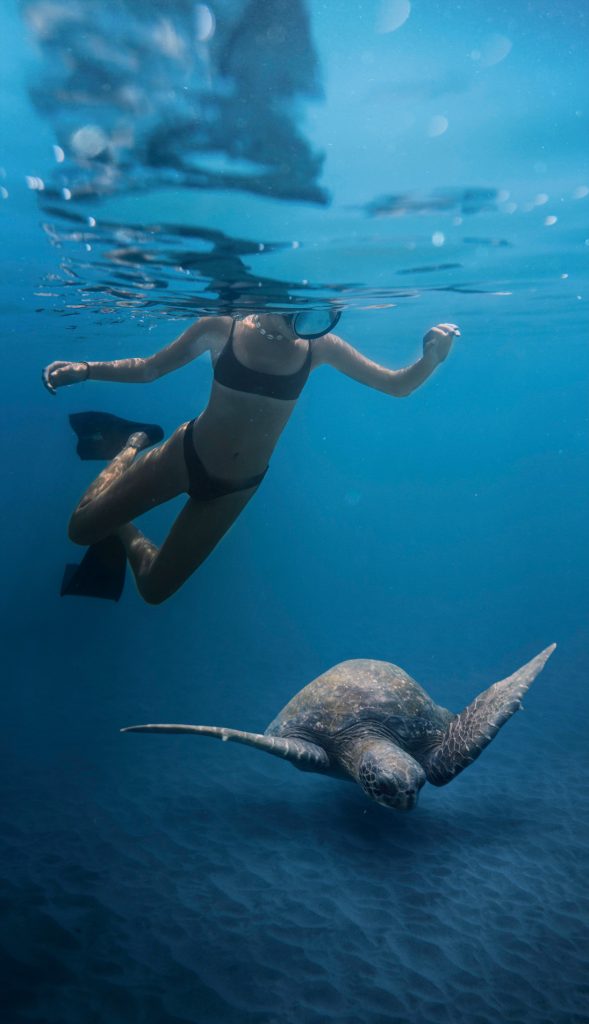
In addition to observing turtles on the island’s beaches, Caño Island offers fantastic snorkeling and diving opportunities. The surrounding waters are teeming with marine life, including sea turtles, making it possible to encounter these graceful animals while exploring the underwater world.
Year-Round Turtle Sightings
While sea turtle nesting season varies by species, visitors to Caño Island have the chance to see turtles throughout the year due to its rich marine ecosystem. Snorkelers and divers often encounter turtles gliding gracefully through the clear waters, enhancing the overall experience.
Caño Island’s status as a nesting ground, conservation efforts, and opportunities for underwater exploration make it a fantastic destination for observing turtles in their natural habitat.
Whether you’re interested in witnessing nesting activities or encountering turtles while snorkeling and diving, Caño Island offers a unique and memorable turtle-watching experience.
Tortuga verde (Green Turtle) – Chelonia mydas
Hawksbill and green turtles are usually seen more on the island because they are associated with the reef.
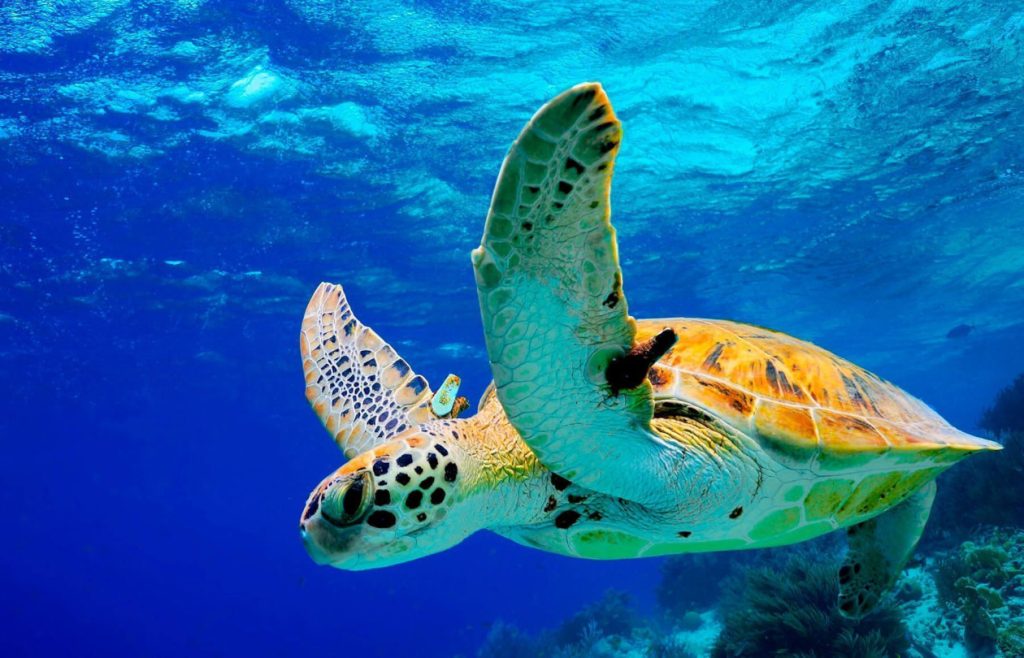
Diving with Green Turtles (Tortuga verde – Chelonia mydas) in the azure waters of Costa Rica is an adventure that immerses you in the wonders of marine life.
The Green Turtle, distinguished by its olive-green shell and herbivorous diet, graces the coastal and underwater landscapes of Costa Rica with its presence.
Diving with Green Turtles in Costa Rica provides a unique opportunity to connect with nature, emphasizing the importance of sustainable tourism and conservation efforts to ensure the preservation of these magnificent creatures and the breathtaking underwater world they inhabit.
Feeding Behavior
Green turtles are herbivorous marine reptiles known for their diet primarily consisting of seagrasses and algae. They have specialized jaws adapted for tearing and grinding plant material.
These turtles maintain the health of seagrass beds in shallow coastal areas by grazing on them, making them essential for the ecosystem. They also eat algae from rocks and coral.
Reproduction and Life Cycle
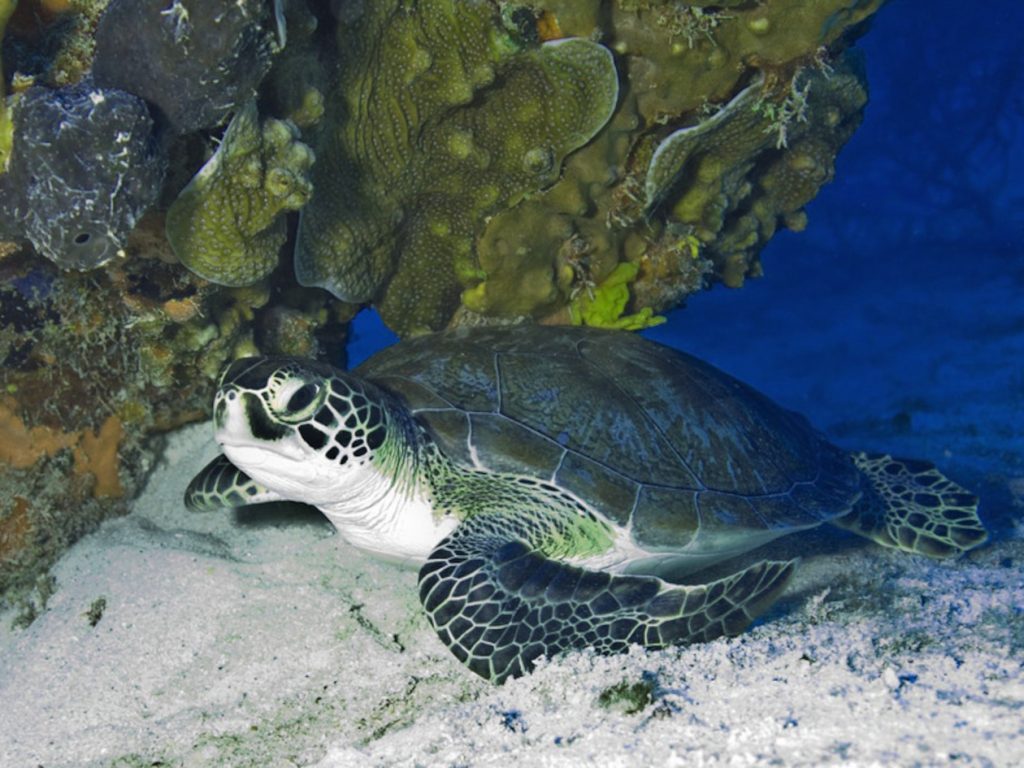
Green turtles have a unique reproductive cycle that involves migration. They typically return to the same beaches where they were born to nest. The females come ashore to lay their eggs in nests they dig in the sand.
After laying eggs, the females return to the sea, leaving the eggs to incubate on their own.
The incubation period lasts around two months, after which the hatchlings emerge and make their way to the ocean. This is a perilous journey as they face predation from various animals.
Once in the ocean, the young turtles spend several years floating in open water, often in oceanic currents, where they continue to grow and feed. They eventually return to coastal areas as subadults and adults to continue their herbivorous diet and complete their life cycle.
Threats
Green turtles face several threats to their survival:
Habitat Destruction:Coastal development, especially the destruction of nesting beaches and seagrass beds, poses a significant threat to green turtles.
Illegal Poaching: The collection of green turtle eggs and hunting of adults for their meat and shells are major problems in some regions, despite legal protections.
Fishing Bycatch: Green turtles often become unintentional bycatch in fishing nets and longlines, leading to injuries and death.
Climate Change: Rising temperatures can skew the gender ratio of hatchlings, as warmer nests tend to produce more females. Additionally, climate change can affect the availability of seagrass, a key food source.
Pollution: Green turtles can ingest plastic pollution in the oceans, leading to health issues related to ingestion.
When to See Them
The timing for seeing green turtles varies depending on the region:
Nesting Season: To witness adult green turtles nesting, you should visit their nesting beaches during the nesting season, which typically occurs in the summer months in many tropical regions. The exact timing can vary by location.
Hatchling Emergence: To observe hatchlings emerging from their nests and making their way to the sea, you should be present during the hatchling season, which typically follows the nesting season by a couple of months.
Subadults and Adults: To see subadult and adult green turtles feeding in coastal areas, you can visit these regions year-round. Coastal areas with seagrass beds and suitable feeding grounds are where you are most likely to encounter them.
Remember that green turtles are a protected species in many countries, and it’s essential to observe them responsibly and in accordance with local regulations to minimize disturbances and ensure their conservation.
Lora Turtle (Olive Ridley Turtle) – Lepidochelys olivacea in Costa Rica
The Kemp’s ridley turtle is seen most in open water, mainly during boat trips to the Caño island.
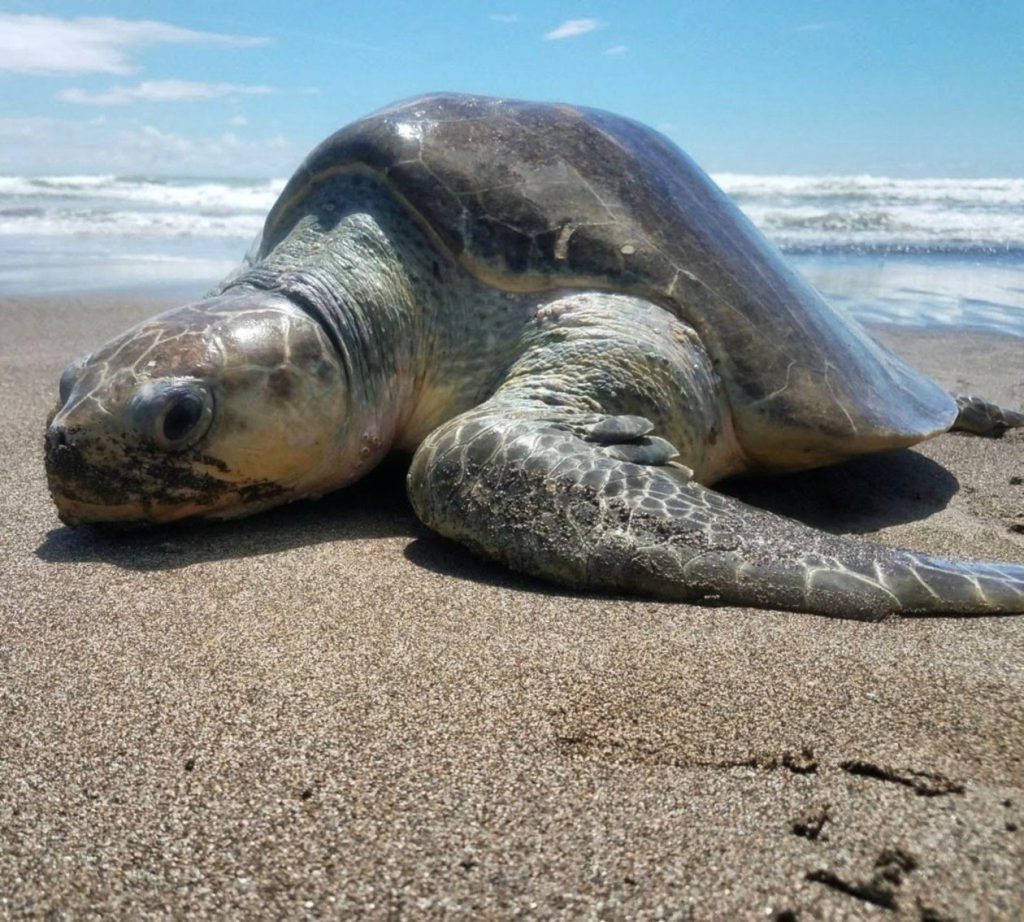
Diving with Lora Turtles, also known as Olive Ridley Turtles (Lepidochelys olivacea), in the crystal-clear waters of Costa Rica offers an unparalleled experience for nature enthusiasts and divers alike.
These magnificent creatures, with their distinct heart-shaped shells, can be observed gracefully gliding through the ocean depths. As you descend into the vibrant underwater world of Costa Rica, you’ll find yourself surrounded by these gentle giants, marveling at their agility and beauty.
Watching how they search for crabs, shrimp, and jellyfish to eat gives us a special peek into their home. Seeing them munch on seagrass and explore coral reefs shows how important they are for the ocean’s health.
Diving with Lora Turtles in Costa Rica is not just an adventure; it’s a profound encounter with one of nature’s most captivating marine species, leaving you with unforgettable memories of the wonders beneath the waves.
Feeding Behavior
Olive Ridley turtles primarily feed on a variety of marine invertebrates like crabs, shrimp, and jellyfish, exhibiting opportunistic feeding behavior. They scavenge for food, consuming whatever prey is readily available in their coastal and oceanic habitats.
Reproduction and Life Cycle
The Olive Ridley turtle’s nesting behavior is famous for its arribada, a synchronized mass nesting event where thousands of females come ashore to lay their eggs on the same beach during a short period. After selecting a suitable nesting site, they dig a nest cavity and deposit their eggs. Unlike some other sea turtle species, Olive Ridleys do not exhibit maternal care and leave the eggs to incubate on their own.
The incubation period lasts around 45-55 days, after which the hatchlings emerge and make their way to the ocean. This journey is fraught with danger as they are vulnerable to predators, such as birds and crabs. Olive Ridley turtles spend several years as pelagic (open-ocean) juveniles before returning to coastal areas as subadults and adults.
Threats Lora Turtle
Olive Ridley turtles face various threats to their survival:
Habitat Destruction: Coastal development, pollution, and the destruction of nesting beaches are significant threats to their nesting sites.
Bycatch: These turtles are often unintentionally caught in fishing nets and longlines, leading to injuries and mortality.
Egg Harvesting: Illegal collection of Olive Ridley turtle eggs for consumption is a problem in some regions, despite legal protections.
Marine Debris: Ingestion of plastic and marine debris can harm these turtles, both directly and indirectly.
Climate Change: Rising temperatures can influence the sex ratio of hatchlings, as warmer nests tend to produce more females.
When to See Them in Costa Rica
In Costa Rica, you can witness the spectacular arribadas of Olive Ridley turtles during their nesting season. The timing can vary slightly from year to year, but it typically occurs from July to December, with peak arribadas often taking place between August and October.
These mass nesting events are a breathtaking natural phenomenon that draws visitors from around the world. They want to witness the turtles’ nesting rituals.
Various conservation organizations and national parks in Costa Rica offer guided tours to observe and learn about Olive Ridley turtles. All during this unique period.
Tortuga Carey (Hawksbill Turtle) – Eretmochelys imbricata in Costa Rica
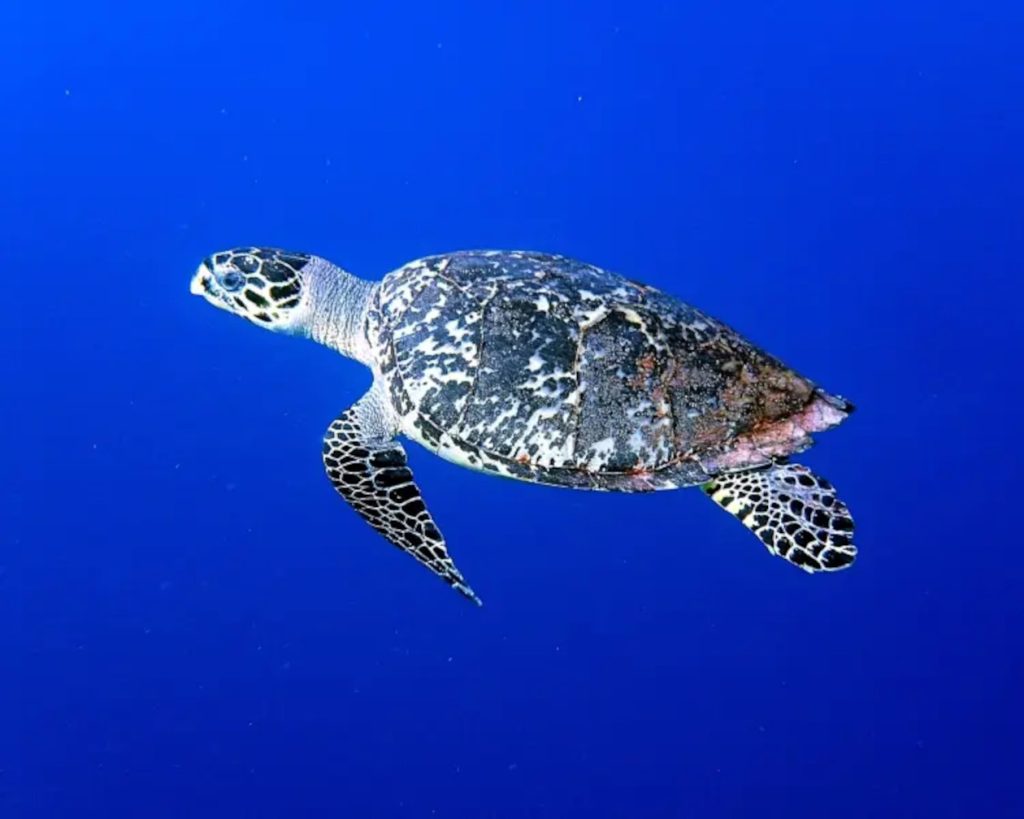
Tortuga Carey, also known as the Hawksbill Turtle (Eretmochelys imbricata), holds a special place in the rich biodiversity of Costa Rica.
These magnificent sea creatures are vital to the marine ecosystem, playing a crucial role in maintaining the health of coral reefs by controlling sponge populations.
Recognizable by their distinctive, overlapping shell plates and pointed beak, Hawksbill Turtles are listed as critically endangered, making conservation efforts in Costa Rica imperative.
The country’s coastline, including nesting sites in places like Tortuguero National Park, provides crucial habitats for these turtles.
Costa Rica has been working diligently to protect these ancient mariners, implementing strict conservation measures, patrolling nesting areas, and raising awareness among locals and tourists alike about the importance of preserving these magnificent creatures for future generations.
Feeding Behavior
Hawksbill turtles primarily feed on sponges, but their diet also includes other invertebrates such as jellyfish and sea anemones. Their narrow, pointed beaks are adapted for reaching into crevices on coral reefs, allowing them to extract their preferred prey.
This specialized feeding behavior helps maintain the health of coral reef ecosystems.
Reproduction and Life Cycle
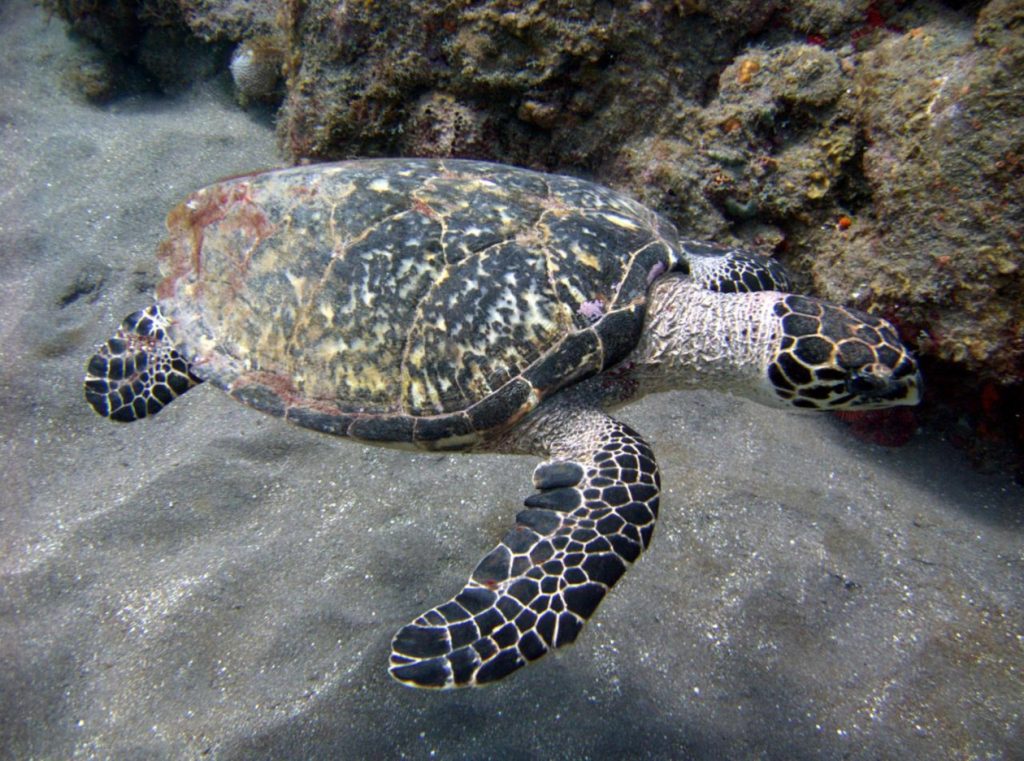
Hawksbill turtles, like other sea turtle species, return to the beaches where they were born to lay their eggs. After nesting, the females leave the eggs to hatch on their own. The hatchlings make their way to the sea and spend several years floating in oceanic currents. Feeding on various small organisms.
Upon reaching a certain size, juvenile hawksbill turtles settle in shallow coastal areas. Including coral reefs, where they continue to feed and grow. They reach xexual maturity at around 20-30 years of age. And hawksbill turtles then participate in the annual breeding migrations and nesting.
Threats
Hawksbill turtles face several threats in Costa Rica:
Habitat Loss: Destruction of coral reefs and nesting beaches due to coastal development impacts their habitat.
Poachers illegally trade Hawksbill turtles for their beautiful shells. Which are used to make jewelry and ornaments, despite international bans on these products.
Climate Change: Rising temperatures affect sea turtle nesting sites, influencing hatchling gender ratios and potentially disrupting their life cycle.
Pollution: Plastic debris and pollutants in the oceans pose a threat, as hawksbill turtles can ingest these materials, leading to health problems.
Fishing Bycatch: Hawksbill turtles often become accidental victims in fishing gear, leading to injuries and mortality.
When to See Them in Costa Rica
Hawksbill turtles can be spotted in Costa Rica throughout the year, especially in coral reef habitats. Snorkelers and divers exploring the country’s coastal regions. Particularly around coral reefs, may have the opportunity to encounter these magnificent turtles.
Additionally, during the nesting season, which varies but often aligns with the broader sea turtle nesting season from July to December, hawksbill turtles can be observed nesting on certain beaches. Providing a rare and remarkable sight for wildlife enthusiasts.
